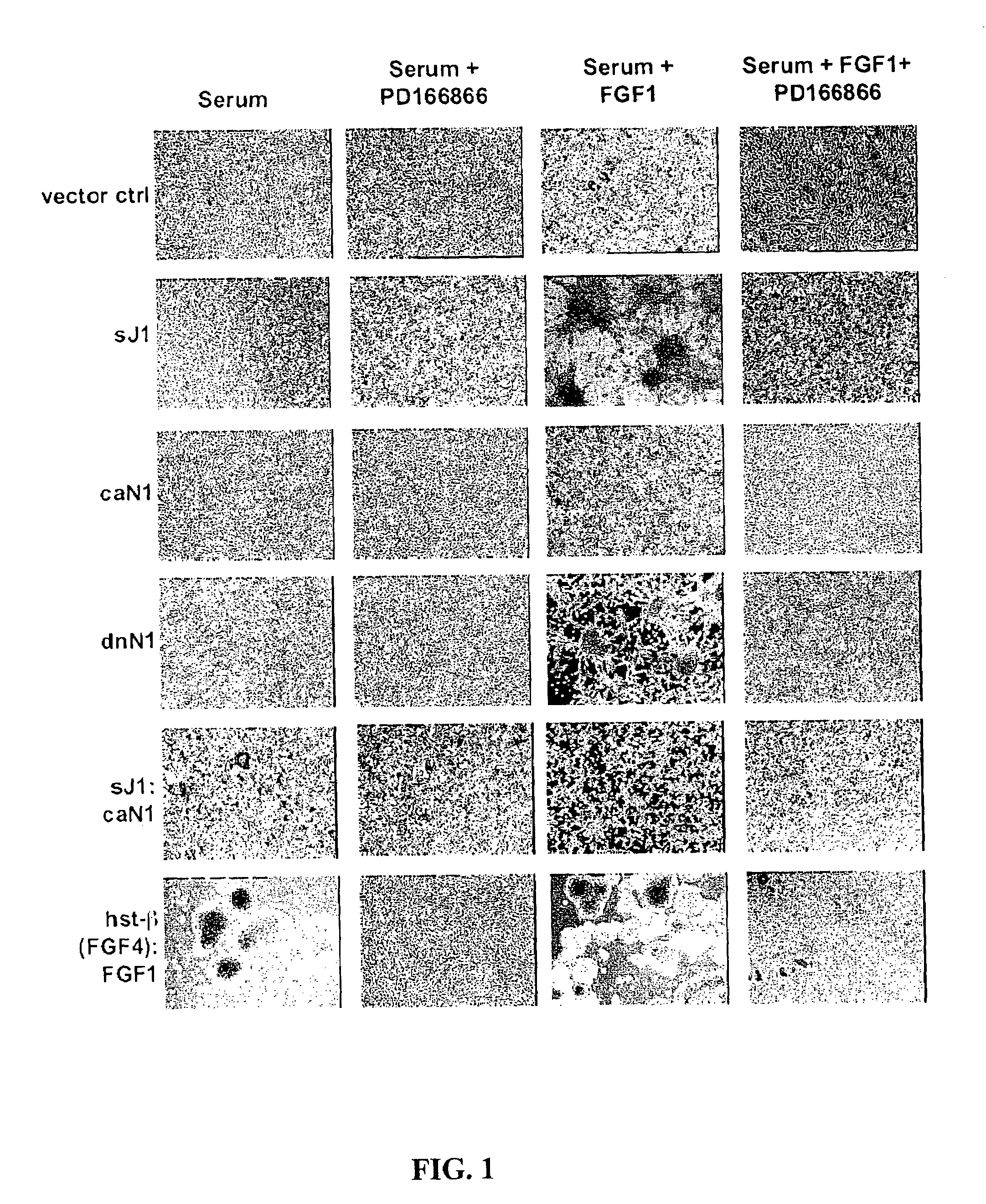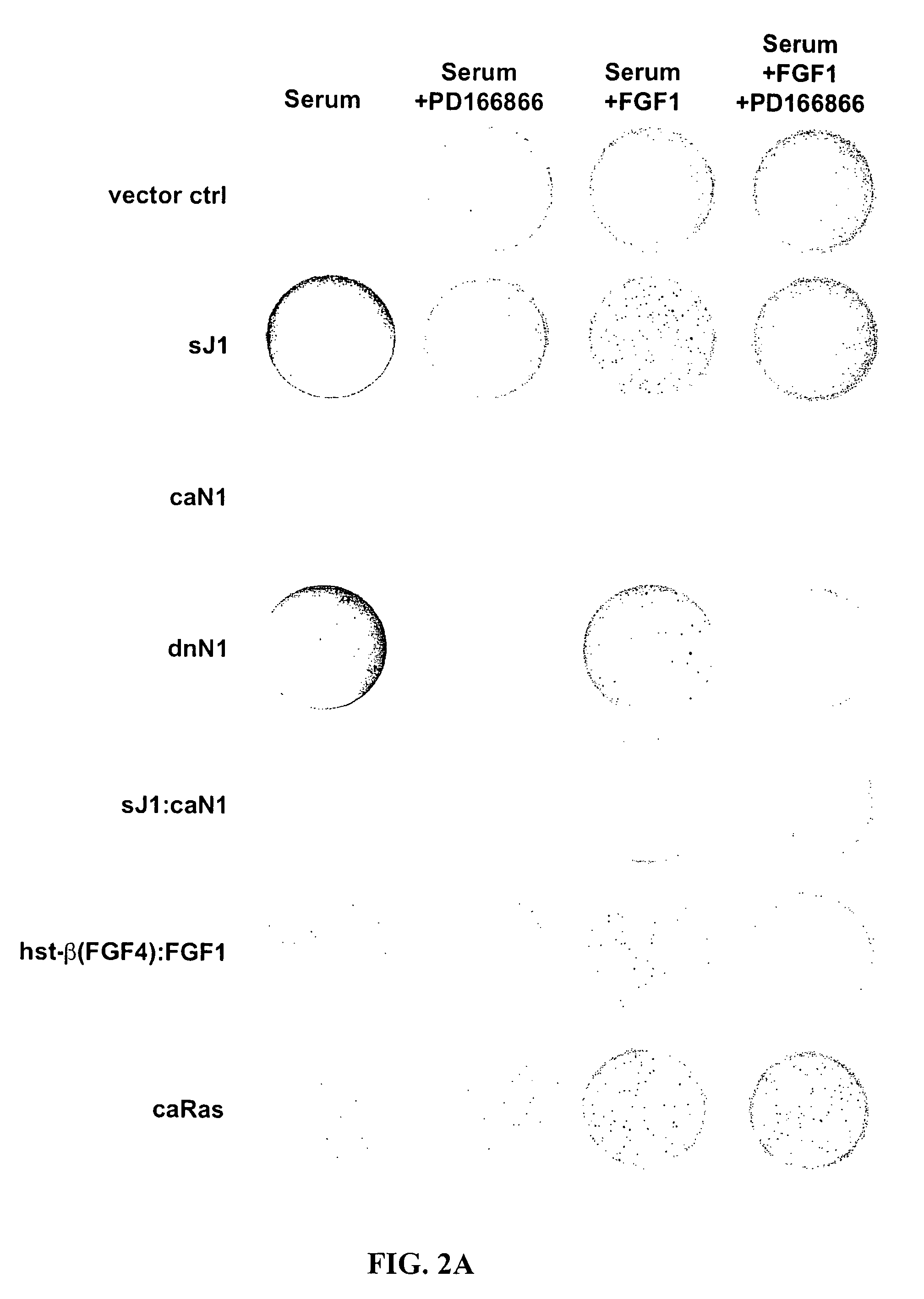Compositions, methods and kits related to thrombin, Notch signaling and stamatogenesis and growth of stem cells
a technology of stem cell growth and notch signaling, which is applied in the field of compositions, methods and kits related to thrombin, notch signaling and stamatogenesis and stem cell growth, can solve the problems of major logistical and ethical barriers, mammalian neuronological damage, and the process of obtaining fetal tissue for therapeutic use, and achieves the effect of not losing multipotentiality and without detection
- Summary
- Abstract
- Description
- Claims
- Application Information
AI Technical Summary
Benefits of technology
Problems solved by technology
Method used
Image
Examples
example 1
Notch Activation Suppresses FGF-Dependent Cellular Transformation
[0299]Aberrant activations of the Notch and FGFR signaling pathways have been correlated with neoplastic growth in humans and other mammals. The data disclosed herein demonstrate that the suppression of Notch signaling in the NIH 3T3 cell either by the expression of the extracellular domain of the Notch ligand Jagged1 (i.e., nonmembrane or soluble Jagged1, sJ1) or dominant-negative forms of Notch1 (dnN1) and Notch2 (dnN2) results in the appearance of an exaggerated FGF-dependent transformed phenotype characterized by anchorage-independent growth in soft agar. Anchorage-independent growth exhibited by Notch-repressed NIH 3T3 cells may result from prolonged FGFR stimulation caused by both an increase in the expression of prototypic and oncogenic FGF gene family members and the nonclassical export of FGF1 into the extracellular compartment. Interestingly, FGF exerts a negative effect on Notch by signaling CSL-dependent tr...
example 2
Thrombin Enables Stamatogenesis, the Clonal Expansion of Stem Cells Without Loss of Pluripotency
[0340]The non-transmembrane form of Jagged1 represses Notch-mediated CSL1-dependent transcription by facilitating the non-classical release of FGF1. To further define this pathway, the mechanism responsible for the appearance of the non-transmembrane form of Jagged1 was examined. Interestingly, the data disclosed herein surprisingly demonstrate thrombin was able to cleave Jagged1 and to enable the induction of FGF1.A transcription, as well as the rapid non-classical release of FGF1 into the extracellular compartment. FGF1 release also underlies the known mitogenic activity of thrombin since thrombin is ineffective in promoting cell proliferation in cells expressing a dominant-negative form of FGFR1. In addition, remarkably, thrombin enabled the clonal expansion of both peripheral and central nervous system stem cells without a loss of pluripotency. These data suggest that while Notch sign...
PUM
| Property | Measurement | Unit |
|---|---|---|
| mole fraction | aaaaa | aaaaa |
| mole fraction | aaaaa | aaaaa |
| mole fraction | aaaaa | aaaaa |
Abstract
Description
Claims
Application Information
 Login to View More
Login to View More - R&D
- Intellectual Property
- Life Sciences
- Materials
- Tech Scout
- Unparalleled Data Quality
- Higher Quality Content
- 60% Fewer Hallucinations
Browse by: Latest US Patents, China's latest patents, Technical Efficacy Thesaurus, Application Domain, Technology Topic, Popular Technical Reports.
© 2025 PatSnap. All rights reserved.Legal|Privacy policy|Modern Slavery Act Transparency Statement|Sitemap|About US| Contact US: help@patsnap.com



